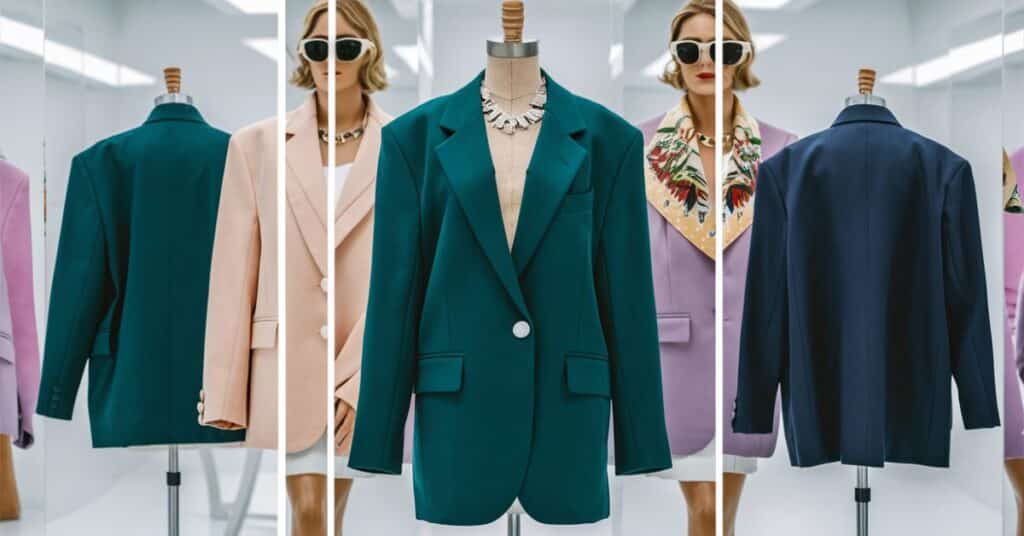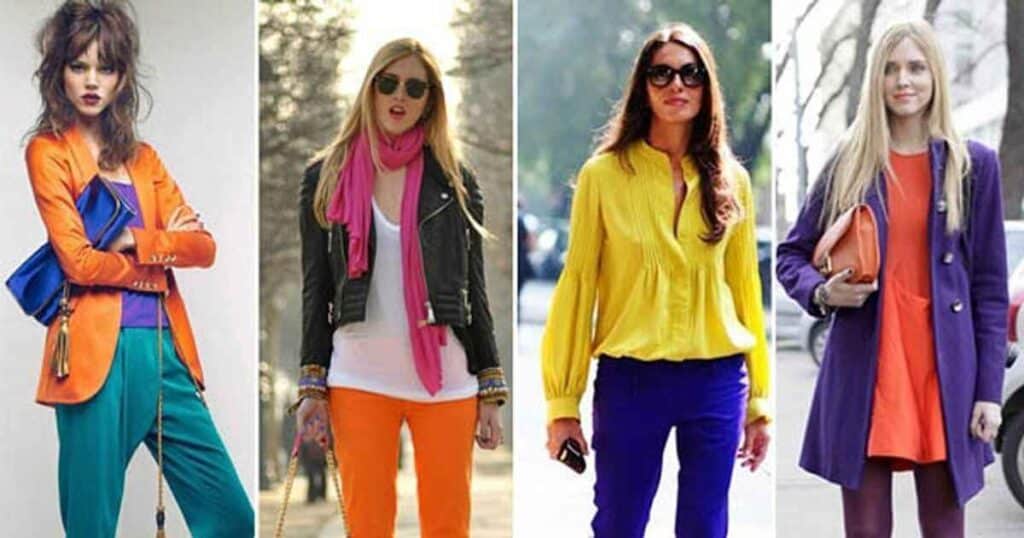Finding your style starts with exploring what makes you feel confident. Look at magazines, social media, and fashion blogs for inspiration. Notice colors and outfits that you like.
Consider your daily activities and lifestyle when choosing clothes. Experiment with different styles to see what suits you. Don’t be afraid to mix and match pieces.
Comfort is key, so choose clothes that make you feel good. Personal style is unique, so embrace your individuality. It’s a journey, not a destination.
How to study fashion icons and industry leaders for inspiration.

To study fashion icons, start by identifying those who align with your style. Follow them on social media platforms like Instagram. Observe their outfit choices and how they accessorize.
Note their color schemes and unique fashion elements.
Industry leaders offer insights into current trends and the future of fashion. Read articles, watch interviews, and attend fashion events to learn from them. Study their careers to understand what makes them successful. Use this knowledge to inform and inspire your personal style journey.
Researching Iconic Fashion Trends
Researching iconic fashion trends begins with exploring historical fashion archives. Examine classic designs from different eras to understand their impact.
Study fashion magazines and websites to identify enduring trends. Note the styles, colors, and materials that continue to influence modern fashion.
Read This Blog: Why Are Hoka Shoes So Expensive
Analyzing Industry Leaders’ Career Paths
Analyzing industry leaders’ career paths starts with researching their backgrounds and experiences. Discover how they entered the fashion industry and progressed.
Explore interviews and biographies to understand their key milestones. This insight helps identify patterns and strategies that contributed to their success.
More Post:
How To Get Into Fashion School
Adopting Lessons from Fashion Icons
Adopting lessons from fashion icons involves observing their style choices and unique approaches. Analyze how they mix and match outfits.
Learn how they use accessories to enhance their looks. Apply these techniques to develop your own personal style with inspiration from the icons you admire.
How to Find Your Personal Style in 5 Steps

Explore Inspiration Sources
Look at fashion magazines, blogs, and social media platforms to find styles you like.
Follow fashion icons and influencers to gain diverse fashion perspectives.
Identify Your Preferences
Determine which colors, patterns, and fabrics you enjoy wearing.
Consider which clothing styles make you feel confident and comfortable.
Assess Your Lifestyle
Think about your daily activities and how they impact your clothing choices.
Consider how your personal and professional environments influence your wardrobe.
Experiment with Different Styles
Try out different clothing combinations to discover what suits you best.
Visit second-hand shops or use rental services to test new styles without committing.
Build a Versatile Wardrobe
Invest in basic pieces that can be mixed and matched.
Add unique accessories and statement pieces to reflect your individuality.
Also Read This Blog:
How Long Do Tennis Shoes Last
A practical guide to identifying and developing your unique style.

Identifying your unique style starts with knowing what you like. Explore fashion magazines, blogs, and social media for inspiration. Note the colors, patterns, and styles that attract you. Look at your current wardrobe to find your favorite pieces.
Developing your unique style involves experimentation and consistency. Try mixing different outfits to see what feels right. Incorporate accessories to add personality to your look. Gradually build a wardrobe that reflects your taste and fits your lifestyle.
Understanding Your Style Preferences
Understanding your style preferences starts with exploring different fashion sources. Look at magazines, social media, and fashion shows for inspiration. Identify colors and fabrics that you like. Keep track of which clothing styles make you feel most comfortable and confident.
Experimenting with Clothing and Accessories
Experimenting with clothing and accessories helps you find your unique style. Try different outfit combinations to discover what you like. Add accessories like scarves, belts, and jewelry to enhance your look. This process of mixing and matching lets you explore new style possibilities.
Creating a Versatile Wardrobe
Creating a versatile wardrobe involves choosing key pieces that mix and match well. Start with neutral colors like black, white, and gray. Include basic items like jeans, white shirts, and a blazer. These versatile staples can be styled for various occasions, making dressing easier and more flexible.
Tips on discovering your personal fashion preferences.

- Identify pieces you wear often and those you avoid.
- Look for patterns in colors, fabrics, and styles you prefer.
- Browse fashion magazines, blogs, and social media for inspiration.
- Follow fashion icons and influencers to discover new styles.
- Try out various clothing combinations to find what suits you.
- Visit thrift stores or rental services to experiment without commitment.
- Think about your daily activities and how they affect your clothing choices.
- Ensure your style matches both personal and professional needs.
- Ask friends or family for their opinions on your outfit choices.
- Join fashion communities to get advice and tips on discovering your style.
Building Your Personal Wardrobe

Building your personal wardrobe starts with foundational pieces. Invest in quality basics like white shirts, black pants, and neutral blazers. These versatile items can be dressed up or down. Focus on durability, ensuring your wardrobe lasts through trends.
To personalize your wardrobe, add statement pieces. Choose items that reflect your unique style, like vibrant accessories or bold patterns. Incorporate a variety of clothing for different occasions. Mix and match these pieces to create versatile outfits.
Guidance on creating a versatile and effective wardrobe.
To create a versatile wardrobe, start with a capsule collection. Choose neutral colors that mix well together. Invest in multi-functional pieces, like jackets that suit different outfits. Add accessories to change up your look without buying new clothes.
Strategies for clearing out unwanted clothing and making room for your new style.
Start by sorting clothes into keep, donate, and discard piles. Keep what you wear regularly and love. Donate items in good condition but no longer your style. Discard worn-out or damaged clothes to create space for new pieces.
Combinations for Men to Build a Capsule Wardrobe

A capsule wardrobe for men should start with neutral colors like black, white, and gray. Invest in basics like a white dress shirt, black jeans, and a navy blazer. These versatile pieces can be mixed and matched easily. Ensure you have classic footwear like black dress shoes and white sneakers.
Add seasonal variations to your capsule wardrobe for more flexibility. Include lightweight options like a gray t-shirt for summer, and heavier items like a wool coat for winter. Choose timeless accessories like a leather belt and a quality watch. This approach ensures you’re always prepared for various occasions.
Essential Clothing Pieces for Men
Essential clothing pieces for men start with classic basics. A well-fitted pair of jeans a crisp white shirt, and a navy blazer are must-haves. These versatile items can be dressed up or down for various occasions. Add comfortable white sneakers and black dress shoes to complete your capsule wardrobe.
Color Coordination and Matching

Color coordination and matching are key to a stylish wardrobe. Start with neutral colors like black, white, and gray. These shades work well with other hues, allowing for flexibility in outfits. Use accent colors like navy or olive to add interest without overpowering your look.
Layering and Accessories
Layering adds depth to your outfits, allowing for versatility and warmth. Start with basic pieces like t-shirts and long-sleeve shirts. Add outer layers like jackets or cardigans to create different looks. Accessories, such as scarves and hats, can enhance your style and provide additional texture.
Creating a balanced and versatile wardrobe for men.

To create a balanced wardrobe, start with essential pieces like a white shirt and black trousers. These basics can be worn for work or casual outings. Add items like a navy blazer and a classic denim jacket for layering.
This mix of formal and casual ensures you’re ready for any event.
To make your wardrobe versatile, focus on neutral colors like black, white, gray, and navy. These shades are easy to mix and match, creating many outfit combinations. Include both dressy and casual footwear to suit different occasions. A leather belt and a quality watch can help complete your look.
How to Style Wide Leg Pants: Tops and Shoes that Work

Wide-leg pants can be styled with fitted tops to balance the silhouette. Try a slim turtleneck or a tucked-in blouse for a sleek look. For a more casual vibe, pair with a simple t-shirt or crop top. These combinations maintain a balanced and proportionate outfit.
Shoes are key when styling wide-leg pants. Heeled shoes, like pumps or ankle boots, elongate the legs. For a relaxed feel, try white sneakers or flat sandals. Choose footwear that complements the pants’ fabric and overall vibe.
Tips on styling a trendy piece of clothing.

- Start by understanding the trendy piece’s key features. This helps you identify what makes it unique and how to style it.
- Balance the trendy item with simple pieces. This avoids overwhelming your outfit and keeps the focus on the trendy item.
- Experiment with different accessories. This can elevate the trendy piece and add a personal touch to your style.
- Consider the occasion when styling the trendy piece. Certain items may work better for casual settings, while others suit formal events.
- Play with color combinations. A trendy piece often has bold colors or patterns, so mix with neutral tones to maintain balance.
- Layer with confidence. Adding layers can enhance the trendy piece and make it suitable for different weather conditions.
- Choose the right footwear. Shoes can make or break the look, so pick ones that complement the trendy piece.
- Find inspiration from fashion icons or influencers. This can give you ideas on how to style the trendy piece in creative ways.
- Trust your instincts and comfort. If you feel good in what you’re wearing, it’s likely you’re styling the piece effectively.’
- Experiment with various combinations to discover what works for you. This trial and error approach helps you develop a unique style around the trendy piece.
Advice on dressing for various professional settings.
For formal settings, choose tailored suits and crisp shirts. Neutral colors like navy and gray work well. Business casual allows for khakis and blazers with polo shirts. In creative workplaces, you can wear jeans with a neat sweater or casual button-down.
How to Dress Like an Entrepreneur: The Ultimate Guide
To dress like an entrepreneur, opt for smart-casual attire. A well-fitted blazer with a button-down shirt creates a polished look. Pair with tailored trousers or dark jeans for versatility.
Complete the outfit with clean shoes and minimal accessories to maintain professionalism.
Outfits and accessories that convey entrepreneurship and confidence.
To convey entrepreneurship and confidence, choose tailored blazers and crisp shirts. Pair with dark jeans or tailored trousers. Accessories should be minimal yet impactful—like a sleek watch or leather belt. Complete the look with polished shoes to project professionalism and style.
How to Dress Like a CEO

To dress like a CEO, start with a well-tailored suit. Opt for classic colors like navy, charcoal, or black. Choose crisp dress shirts that complement your suit, sticking to white or light blue.
Add a quality tie that enhances your overall look without being too flashy.
For accessories, keep it simple but elegant. A quality wristwatch and a leather belt are staples. Invest in premium leather shoes to complete your outfit.
The key is to project confidence and authority through a refined and professional appearance.
Steps to create a wardrobe that exudes leadership and authority.
To create a wardrobe that exudes leadership, start with classic, tailored pieces. Invest in high-quality suits and blazers that fit perfectly.
Choose neutral colors like navy, charcoal, and black for versatility. A well-fitted suit instantly communicates authority and professionalism.
Next, focus on the details. Crisp dress shirts and elegant ties add a touch of refinement. Invest in premium leather accessories, like belts and shoes, for a polished look.
Maintain a simple yet sophisticated color palette to ensure a cohesive and authoritative appearance.
Formal Dressing Options for Men & Women

For men, formal dressing options include tailored suits and crisp dress shirts. Classic colors like black, navy, and gray are versatile. Add a sleek tie and a matching pocket square for a refined look. Complete the outfit with polished leather shoes and a quality belt.
For women, formal dressing can involve tailored dresses or elegant skirt suits. Neutral colors like black, navy, and gray are popular choices. Pair with tasteful jewelry and a structured handbag for a polished appearance. Heeled shoes, like pumps or ankle boots, add a touch of sophistication.
Practical tips for maintaining a polished appearance.
To maintain a polished appearance, keep your clothes clean and pressed. Regularly check for stains, wrinkles, or loose threads. Invest in a quality lint roller and a good iron or steamer. Properly storing your clothes can also prevent creases and maintain fabric quality.
Grooming is crucial for a polished look. Keep hair trimmed and styled, and nails clean and neatly cut. Use subtle fragrances for a pleasant presence without overwhelming others.
Proper skincare ensures your face looks fresh and healthy. Attention to these details helps you always appear well-groomed.
How to Look Put Together All the Time

To look put together all the time, start with a consistent skincare routine. Cleanse and moisturize your skin daily to keep it fresh. A tidy haircut and neatly groomed facial hair also make a significant difference. This basic grooming routine creates a polished base for any outfit.
Choose simple yet stylish clothing to create a cohesive look. Opt for neutral colors that are easy to mix and match. Always keep your clothes clean and wrinkle-free for a sharp appearance. Add subtle accessories, like a watch or belt, to elevate your style without overdoing it.
A comprehensive guide to maintaining a look.
Maintaining a consistent look starts with a well-curated wardrobe. Select classic pieces that suit your style and are easy to combine. Stick to a cohesive color palette to simplify outfit choices. This makes it easier to create polished outfits with minimal effort.
Regular grooming is crucial for a consistent appearance. Keep your hair neat and styled, and ensure facial hair is well-groomed. Pay attention to small details, like clean shoes and pressed clothes. These simple steps ensure you always look put together and ready for any occasion.
Embracing Personal Style Through out Life

Embracing personal style throughout life means adapting to changes while staying true to yourself. As you grow, your style may evolve with new experiences.
Embrace trends that align with your preferences but don’t force a complete transformation. Personal style should reflect your unique personality and journey.
To keep your style relevant, experiment with different clothing and accessories. This helps you find pieces that resonate with you at each stage of life. Prioritize comfort and confidence in your choices.
Ultimately, personal style is about feeling good in what you wear, regardless of age or trends.
Considering style as you grow and change.
As you grow, your body and lifestyle may change, affecting your style. What worked in your twenties might not suit your forties. Consider your current activities and preferences when updating your wardrobe. Adapting your style is part of evolving through life’s stages.
While adjusting your wardrobe, retain key elements that represent you. Keep foundational pieces like a classic blazer or a quality pair of jeans.
These timeless items can be styled in new ways as you age. Embrace change, but don’t lose sight of what makes your style unique.
How Women’s Bodies Change in Their 40s and 50s
In their 40s and 50s, women often experience hormonal changes that impact their bodies. These changes can affect skin elasticity and bone density.
Some women notice increased weight gain around the waistline. Menopause can also bring hot flashes and sleep disturbances.
These body changes may lead to shifts in clothing preferences. Women might opt for looser, more comfortable clothing that accommodates body fluctuations.
Breathable fabrics can help manage hot flashes. It’s also essential to invest in supportive undergarments for comfort and confidence during this life stage.
Guidance for adapting your style as your body and lifestyle evolve.

As your body and lifestyle evolve, your clothing choices may need to adapt. Focus on comfort without sacrificing style. Select versatile pieces that work across various settings.
This flexibility allows you to maintain a cohesive wardrobe as circumstances change.
Consider adding items that accommodate body changes. Opt for adjustable or stretchable clothing that adapts to fluctuations in weight or shape.
Incorporate breathable fabrics for increased comfort. By prioritizing flexibility and comfort, you can continue to express your personal style as you evolve.
Frequently Asked Question
How do I know what my style is?
Take note of the clothes you wear often and the outfits that make you feel confident. This can give you insights into your natural preferences and fashion tendencies.
Where do you get your style?
Your style can come from various sources like personal interests, lifestyle, cultural influences, or fashion trends. You might also draw inspiration from family, friends, or fashion icons.
How to check my style?
Review your wardrobe and analyze your daily outfits to identify common themes. Using Pinterest or other visual platforms to create a mood board can help you understand your style better.
How do you identify a style?
Identifying a style involves exploring different fashion categories and noting what resonates with you. Consider your lifestyle, personality, and the types of outfits you find appealing.
How do I find my aesthetic style?
Finding your aesthetic style requires experimentation with various looks, colors, and patterns. Start by exploring fashion magazines, blogs, or social media, and then refine your choices to create a unique aesthetic.
Final Thoughts
Finding your style is a journey of self-discovery and creativity. It requires exploring different fashion influences, understanding your preferences, and ultimately feeling comfortable in your own skin. Start by examining your wardrobe and daily clothing choices to identify patterns.
Experiment with various styles, from classic to bohemian, and use tools like Pinterest to build mood boards. Don’t hesitate to step outside your comfort zone—often, the most unexpected combinations lead to unique and personal looks.
Tailoring your clothes for a perfect fit can make a world of difference, as can investing in quality pieces for a capsule wardrobe. Remember, style is not just about clothing; it reflects your personality and lifestyle. As you evolve, so will your style.
Trust the process, have fun with it, and embrace the versatility that comes with exploring fashion. Ultimately, the key to finding your style is feeling confident and expressing who you are through your choices.







